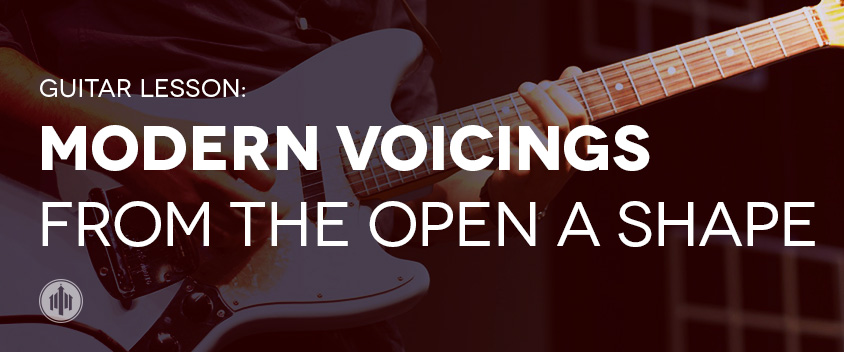
Two of the most common questions I get from my guitar students or when I do workshops is “How can I sound more modern?” and “What do I play if there are multiple guitarists in my band?”. This lesson will give you some ideas on how to take the open A chord and break it apart to create new sounds and distance yourself from the range of other musicians in your band.
- The first shape is one of the first chords you probably learned: an open A, which consists of two roots (A), two fifths (E), and one third (C#).

- The next shape is the same shape but moved up three frets, your basic C major barre chord. We will deconstruct this shape to make the rest of the shapes.
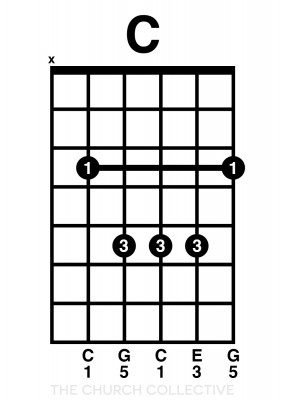
- Next we take away everything except for the root and 5th, which leaves your basic C power chord or C5. Keep in mind the “x” indicates that string should not be played.
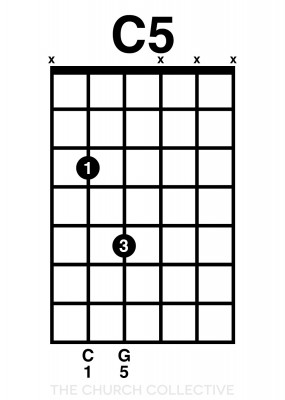
- The fourth shape adds the octave to the power chord, which is still a C5, but has a tad thicker sound.
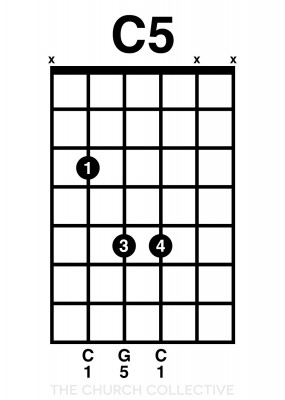
- If you take away the 5th from that C5, you are left with an octave. This is great for playing melodic lead lines or instrumentals where “shredding” would be out of place.
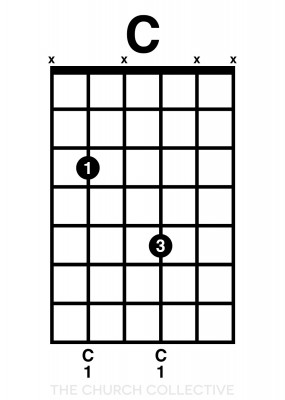
- Next is where it starts to get interesting. This shape is a 3 note barre consisting of the 5th, root, and 3rd. It is your most stripped down triad without any doubled notes. This shape is great for using a slide since all three notes are on the same fret.
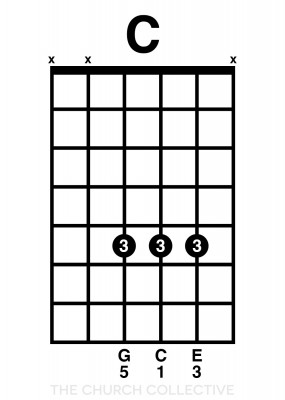
- The next shape is an inverted power chord and is made famous by the song Smoke On The Water. Since both notes are on the same fret, you can use any finger and change chords quickly, similar to drop D power chords.
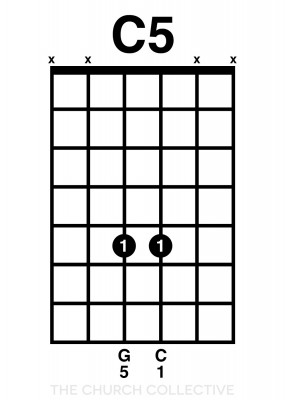
- In the next shape you are left with just the root and 3rd. I use this shape a lot in worship. It sounds good because of the 3rd on top and can put you in a different register than your rhythm guitarist or keyboardist. Sometimes I challenge myself to play an entire set with only these two strings. It really comes in handy when your high E string breaks.
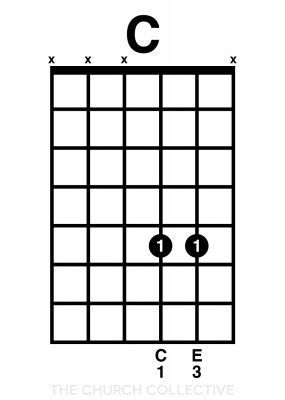
- This shape takes away the root and leaves you with the 5th and the 3rd. Since your bass player is playing the root, it’s not necessary for you to play it. This shape is nice because the notes are a major 6th apart giving it a wide sound. You can hear this shape a lot in Hillsong’s guitar parts.
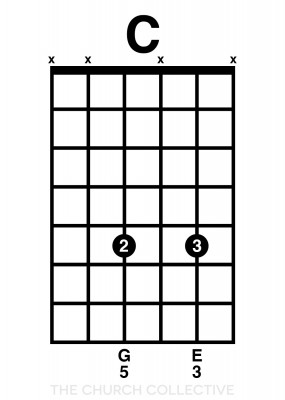
- This next shape is one of my favorites and is the one I get asked about the most. It is your basic power chord with the 3rd added on top. It has a wide open sound and is great for rhythm playing as well as ambient swells. Since it’s shaped similar to a power chord it’s easy to grab. Just make sure not to let the 3rd string sound. I will often use hybrid picking to pull this chord instead of strumming it.
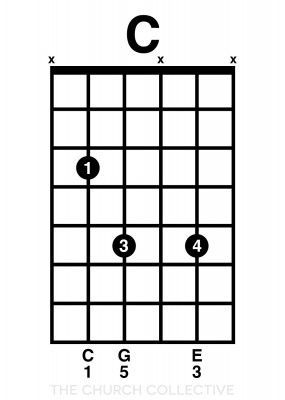
- This shape is another one of my favorites. You can hear this voicing being played by MuteMath as well as James Duke. It’s your standard octave shape, but with the 3rd added to the top. It can sound huge with a bit of overdrive and some delay added to it.
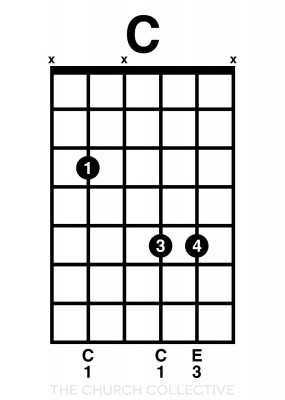
- This voicing is basically number 10 with the 5th left out. The interval is really wide. I usually use this when I have both of my delays and both of my reverbs on to get a soupy, washy, sound without turning muddy. You can hear ambient players, such as Andy Othling, use this for swells.
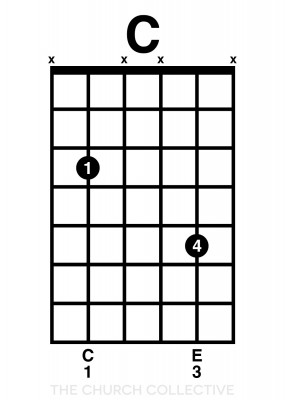
- The next shape is a basic triad but on the top 3 strings. This shape can really get you far away from the range of your other guitar players.
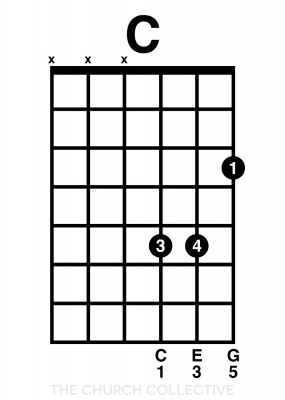
- This final shape is the highest sounding. I usually use this when playing lead or when there are two or three other guitar players on stage with me.
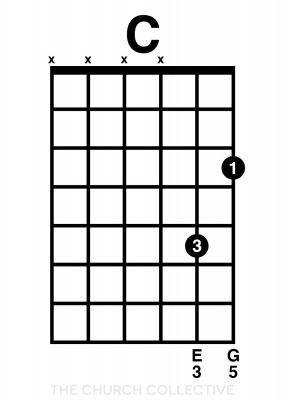
Application:
After you have learned these shapes try taking each one and moving through a I / IV / V / IV progression by sliding up the neck of your guitar (Cmaj = 3rd fret, Fmaj = 8th fret, G maj = 10th fret, Fmaj = 8th fret).
In the next lesson we’ll discuss how to use the A minor shape to create minor versions of each voicing.

